Where to Live in Malta
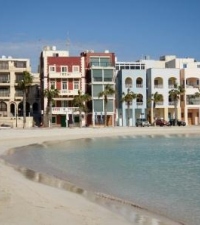
Most villages in Malta have a school, a pharmacy, shops, restaurants, and bars/pubs. Some villages have a hospital and/or medical clinic and a large grocery store. Malta’s villages are generally very densely populated.
All villages in Malta and Gozo can be accessed by public transportation, but transportation frequency varies village to village.
Sliema, St. Julian’s & Paceville
Sliema, St. Julian’s, and Paceville are the most popular areas for expats to live in in Malta.
The village of Sliema is a mix of residential and commercial buildings, with a long promenade facing Marsamxett Harbour and the Valletta skyline.
St. Julian’s is located between Sliema and Paceville, and connects to these villages by a long seaside promenade.
Paceville is located on the border of St. Julian’s. Paceville is Malta’s main bar district.
These are the most ‘urban’ of Malta’s villages, located on the sea with a mix of residential and commercial buildings. Here you will find shopping malls, bars, restaurants, clubs, lidos, public sea access, schools, movie theatres, marinas, and a vibrant international community. Paceville also has a small, manmade sandy beach.
Sliema, St. Julian’s and Paceville are very popular with tourists and ESL students students year-round, so you will also find many tourist services, resorts, and hotels in this area.
Main bus terminals are located in Sliema, St. Julian’s and Paceville. You can also get water taxis in these villages.
These are also some of the most costly areas to live in Malta, but they are an excellent place for newcomers to put down roots. In these villages you will find a mix of traditional townhouses and modern residential developments. Even if you are considering moving to a rural area of Malta, you should think about renting property in Sliema or St. Julian’s first to meet new people.
St. Paul’s Bay, Qawra & Mellieha
These villages are Malta’s second most popular expat hub. Located in the north of the island, with plentiful seaside access and sprawling sandy beaches, St. Paul’s Bay, Qawra and Mellieha are a popular choice amongst retirees, families, and holidaymakers. Here you’ll find museums, bars, restaurants, shops, marinas, movie theatres, hotels, resorts, and schools.
Busy in the summer, these villages tend to be quite quiet in the off-season. Real estate in these areas is very affordable. Driving distance to Sliema/St.Julian’s and Valletta can be up to one hour in traffic.
Valletta & Floriana
Valletta and Floriana are traditionally quieter villages. Although few expats chose to settle here, they are Malta’s banking and government centers, and are enjoying a resurgence in recent years as public buildings and spaces in this area are renovated and refurbished.
In Valletta you will find bars, restaurants, museums, offices, parks, public squares, movie theatres, shopping malls, arts centers, theatres, and some residential areas. Parking and car access to Valletta is very limited, as much of the city is pedestrianized. Most buildings in Valletta are historic or traditional townhouses. Public sea access is located outside the city walls. Valletta is very quiet at night.
A main bus terminal is located at the border of Valletta and Floriana.
Pembroke & Madliena
Located north of Malta’s main urban area, Pembroke and Madliena are a good option for expats who want to be close to amenities, but enjoy the quiet and space of the countryside. Depending on the neighborhood, real estate prices in this area can be quite costly.
The Three Cities: Birgu, Senglea & Kalkara
The Three Cities are not always the first area expats think to settle in, but they offer lovely views of Valletta and the Grand Harbour, historic charm, and a quieter pace of life. The Three Cities have some shopping, bars, restaurants, museums, and schools. Real estate here can be quite affordable.
Hamrun, Qormi & Santa Venera
Hamrun, Qormi, and Santa Venera are well appointed traditional residential areas, within commuting distance of Valletta, Sliema and St. Julian’s. The streets in Hamrun, Qormi and Santa Venera are lined with Maltese townhouses, bars, restaurants, and shops. There are also local schools, and good bus services.
Near Qormi is Malta’s only golf course, a sports club, and a horse track.
Gzira, Ta x’biex & Msida
The main University of Malta campus is located in Msida, making these areas popular with students. Real estate in these villages is quite affordable, and you will also find lots of office space here. There are limited shops and restaurants in Gzira, Ta x’biex and Msida. Ta x’biex has a lovely marina, which is bordered by large embassies. Malta’s National Pool is also located in Msida.
There is a main bus terminal at the University in Msida, at the Hospital in Msida, and on the highway at Msida.
Birkirkara, Lija & Balzan
Birkirkara is Malta’s largest village, bordered by the villages of Lija and Balzan. These are popular residential areas, with many traditional townhouses and modern single-family homes. You can find many shops, bars, restaurants, and schools here. The University of Malta’s Residence, the President’s house and San Anton Gardens are also located in Lija, as are several embassies and an upscale hotel. However, real estate in this area can be affordable.
Mosta
Mosta is Malta’s central village. Here you’ll find a mix of traditional townhouses, modern residential developments, and commercial spaces. There are many bars, restaurants, and shops in Mosta. The village also has a main bus terminal.
Outside of Mosta in Ta Qali you will find Malta’s National Football stadium, a convention center, a national park, an off-leash park for dogs, a craft’s market, an aviation museum, and several open-air clubs.
Marsascala, Marsaxlokk, Birzebugga
While the south of the island is less densely populated than the central and northern regions, here you’ll find traditional Maltese fishing villages and townhouses with easy seaside access and marinas. In Birzebugga you will also find Malta’s Freeport.
Mdina & Rabat
Located in the center of the island, Mdina and Rabat are lovely residential areas with histories as ancient as the island itself.
Mdina is a very small, walled, medieval city. There is very little real estate available here, but it is a nice getaway for those preferring a very quiet and historic home.
Real estate in Rabat is more plentiful, with many townhouse lined streets, bars, restaurants, and shops.
Zabbar, Tarxien, Zejtun
Located southeast of Valletta, Malta’s capital city, these villages are residential neighborhoods with a mix of modern and traditional dwellings and commercial buildings. In these villages you’ll find bars, shops, restaurants, and schools. In Tarxien you will also find several ancient temple complexes and museums.
Kirkop, Luqa, Mqabba, Gudja, Siggiewi, Qrendi & Zurrieq
Located around Malta’s airport, these villages are residential neighborhoods with a mix of modern and traditional dwellings and commercial buildings. In these villages you’ll find bars, shops, restaurants, and schools.
In Qrendi you’ll also find Malta’s Neolithic temples of Hagar Qim and Mnajdra.
Gozo
Gozo - Malta’s smaller sister island - is a rural oasis for families and retirees who don’t mind the commute to the mainland. A smaller, quieter, and charming counterpart to Malta, Gozo has all of the amenities you will need, including bars, restaurants, shops, shopping malls, movie theatres, hospitals, schools, and public transportation. There are also museums, beaches, ancient temples, public sea access, and many historic sites in Gozo.
Major roadworks are due to be finished in Gozo shortly, seeing many of its roads vastly improved and modernized (better than Malta’s!) While there are many traditional townhouses in Gozo, you can also rent or purchase modern flats and rural villas here. Real estate in Gozo is much cheaper compared to Malta.
The ferry to Gozo departs Cirkewwa (Malta) and arrives in Mgarr Harbour (Gozo). The ferry crossing takes 20 minutes, but crossings can be limited to once per hour during off peak hours. From Cirkewwa, the commute to Sliema/St. Julian’s/Valletta can take over an hour in traffic.
By Jess Gerrow, who traded city life in Canada for island life in the Mediterranean two years ago. She is a postgraduate marketing student, blogger, and freelance writer.
- My Life Abroad -
A selection of expat stories

"A fun compulsive read!"
J. Matcham, Amazon
"I strongly advise people ready to live abroad to read this book!"
Patrice, Amazon

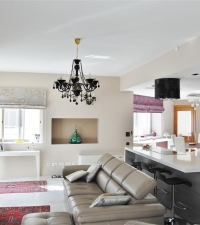 The procedures of buying and renting property in Malta
The procedures of buying and renting property in Malta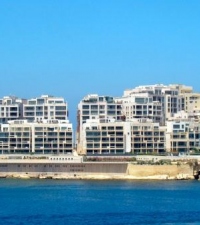 Renting Property in Malta
Renting Property in Malta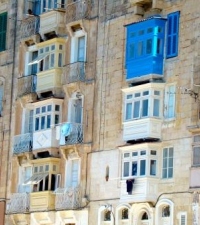 Buying Property in Malta
Buying Property in Malta
 AGS Worldwide Movers
AGS Worldwide Movers Fexco payment solutions
Fexco payment solutions 1stMove Car Shipping
1stMove Car Shipping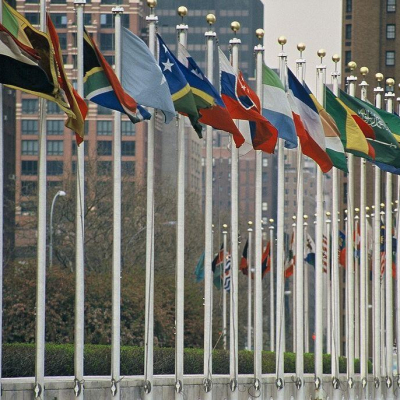 Embassies and Consulates in Malta
Embassies and Consulates in Malta